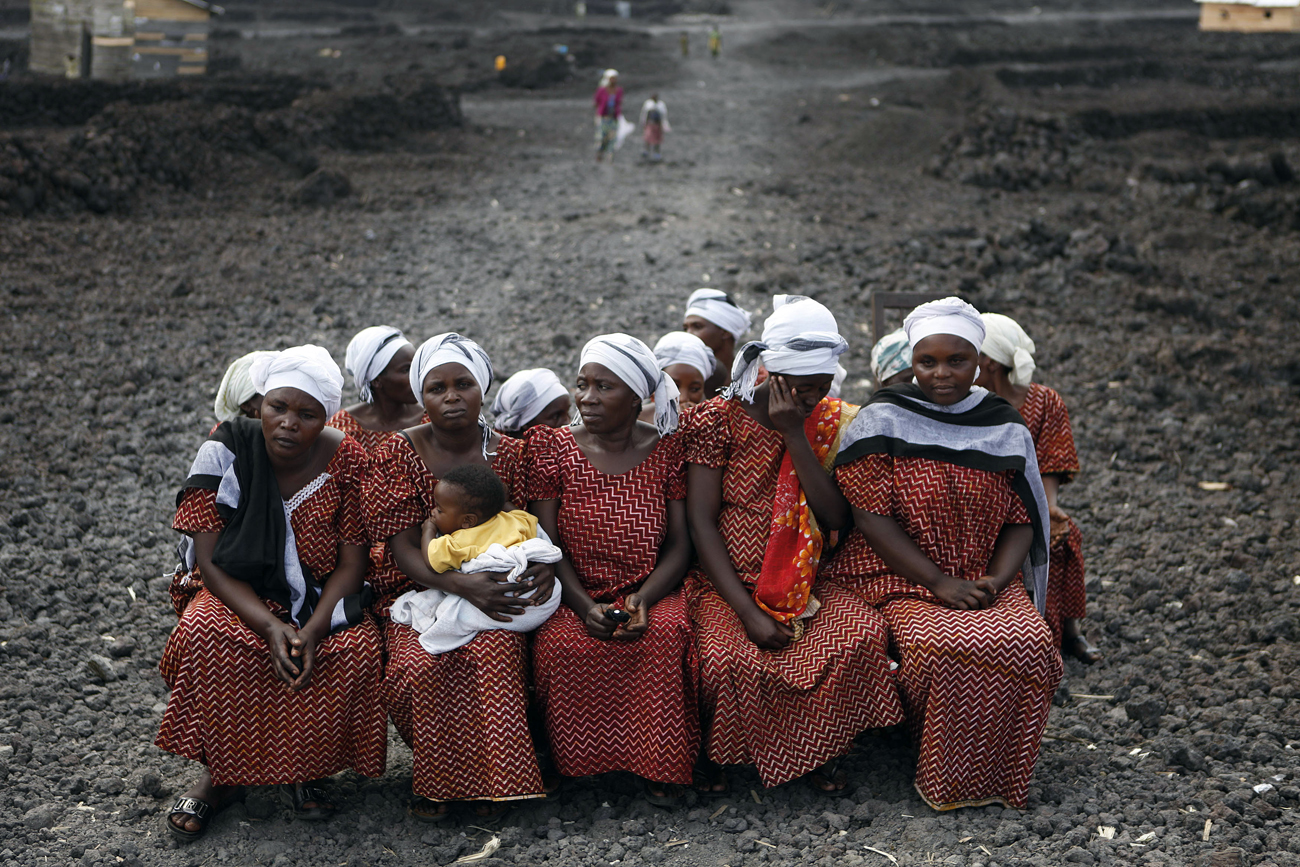It’s a metaphor that’s been used countless times, but maybe that’s because there’s none that comes as readily to hand: to arrive in Goma after the three-and-a-half hour boat ride from Bukavu is to journey through heaven to get to hell. Lake Kivu, which empties into the Ruzizi River in the Albertine Rift, is characterised in its contours by shaded inlets and verdant peninsulas and forest-fringed waterfalls. Parts of its 2,700 square kilometre surface area lie within the boundaries of the Virunga National Park, and mountain peaks conclude the view on every horizon. Cranes ride the air currents, mango fish swim in its depths and villagers paddle the waters in ingenious dugouts. From the boat, the eastern DRC is bloody marvellous.
But there’s a secret in the lake that stands as symbol for what happens on shore. Kivu is one of the world’s three known “exploding lakes”, meaning that ever-expanding volumes of carbon dioxide and methane threaten “overturn”, a process whereby vast quantities of lethal gas leak into the atmosphere to kill en masse. It works, hypothetically, like this: a significant volcanic eruption from Nyiragongo – which, when it last blew in 2002, destroyed 40% of Goma – would heat the water, force the methane out, spark a methane explosion and trigger a discharge of carbon dioxide on a catastrophic scale. The world’s two other exploding lakes, Monoun and Nyos in Cameroon, overturned in the 1980s and killed 1,800; the difference with Kivu is that it’s 2,000 times bigger, supporting about 2-million people in its environs.
Disembarking at Goma, then, involves meeting a caste of humanity who is understandably tense. And the threat posed by the lake, the inherent natural violence it stands ready to unleash, is so far nothing compared to the man-made violence that has been visited on the city since 1994. In a (necessarily oversimplified) nutshell, first Goma was at the centre of the Rwandan refugee crisis, when over a two-day period 10,000 to 12,000 Hutu refugees poured into the city per hour to escape the revenge-bent Tutsi-led Rwandan Patriotic Front; then it was at the centre of the First Congo War, when Hutu militias used it as a base from which to attack ethnic Tutsis in the provinces of North Kivu and South Kivu; then it was at the centre of the Second Congo War, when Rwanda’s Paul Kagame and Uganda’s Yuweri Museveni funded and trained a rebel movement headquartered in the city, ostensibly to get rid of their former ally and “protégé” Laurent Kabila of the DRC. By 2008, the Second Congo War alone had killed over 5-million people, the majority from disease and starvation, making it the deadliest conflict since World War Two.
So in March 2012, the road from the port, through the town centre to our hotel, remains a vista on a devastated and besieged city. Improbably high walls, topped by razor wire and ending in guard turrets, characterise most of the buildings; vehicles negotiate deeply rutted tracks gummed up by volcanic mud; and Medecins Sans Frontieres and the United Nations are ubiquitous.
But on our first night in town we get an insight, from a South African member of the UN who asks to remain nameless, that suggests the relative peace of the last two years is translating into something different. “Ja,” he says, after informing us that he’s been stationed in Goma for six months, “you know these high walls, I don’t understand them. I was flying over the shantytown the other day and I saw they’re also building big walls. There’s this culture here of keeping people out. All there is here is petty theft and stuff.”
His allusion to the situation in Johannesburg, where the height of the walls dwarfs the true scale of the violence, is encouraging. “It’s relatively peaceful in Goma now. There’s development. Go and have a look at the beachfront, see the new houses going up there, see those two new hotels within 50 metres of each other.” It’s his final remark, though, that seems the real cause for optimism. “The world thinks this is a terrible place, and that suits the NGOs. The perception of ‘unrest’ keeps the funding coming in. But the people don’t want us here anymore. They want us to go.”
Then there’s what’s happening across the border, in Rwanda, which is a couple of hundred metres away from where we stand. Gisenyi, the Rwandan town that abuts Goma, may soon be the beneficiary of electricity from methane power plants along the lakeshore. The Kibuye pilot project, in a world first, has already started generating power from the gasses in the lake, using an extraction method that simultaneously reduces the risk of an “explosion”. The DRC has rights to half of Kivu’s natural resources, and talks are underway to build a joint plant. DM
Photo: Women from a church choir sit on benches upon the lava floe from a 2002 eruption in the eastern Congolese city of Goma. REUTERS/Finbarr O'Reilly.






